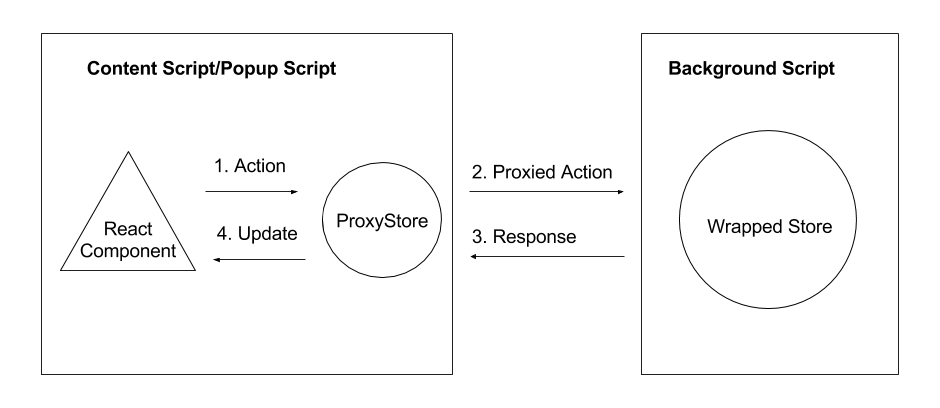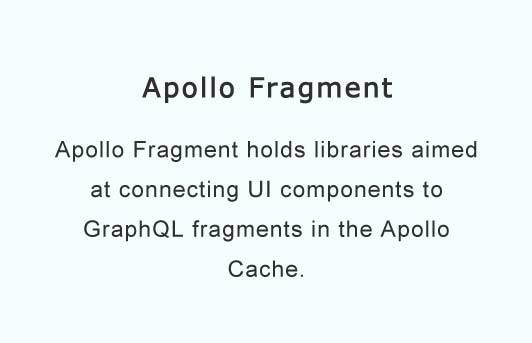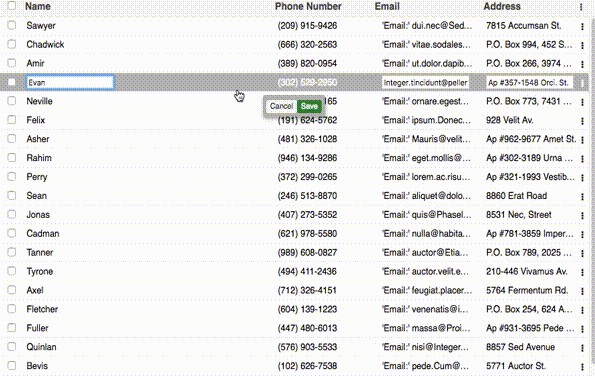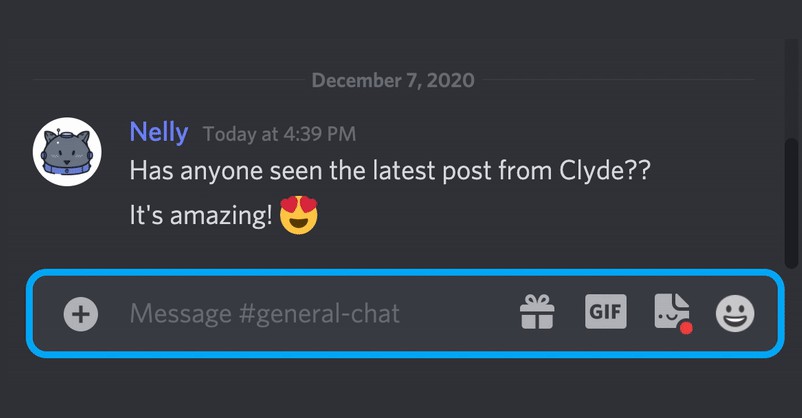React Chrome Redux
A set of utilities for building Redux applications in Google Chrome extensions. Although React is mentioned in the package name, this package's only requirement is Redux. Feel free to use this with AngularJS and other libraries.
Installation
This package is available on npm:
npm install react-chrome-redux
Overview
react-chrome-redux allows you to build your Chrome extension like a Redux-powered webapp. The background page holds the Redux store, while Popovers and Content-Scripts act as UI Components, passing actions and state updates between themselves and the background store. At the end of the day, you have a single source of truth (your Redux store) that describes the entire state of your extension.
All UI Components follow the same basic flow:
- UI Component dispatches action to a Proxy Store.
- Proxy Store passes action to background script.
- Redux Store on the background script updates its state and sends it back to UI Component.
- UI Component is updated with updated state.
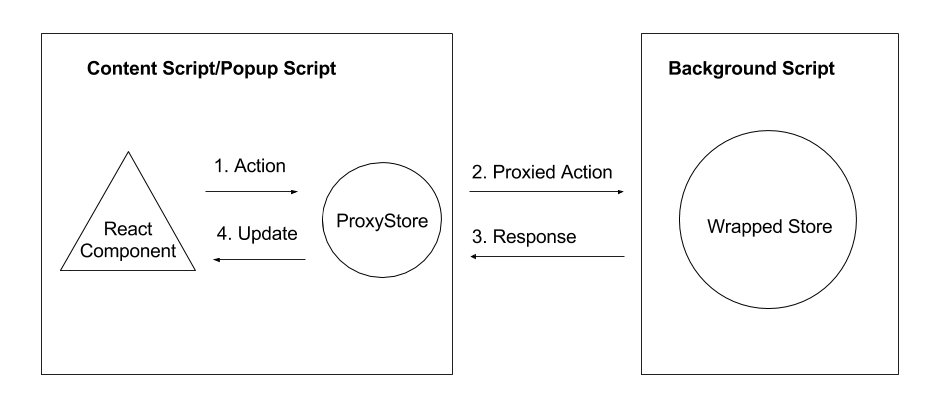
Basic Usage (full docs here)
As described in the introduction, there are two pieces to a basic implementation of this package.
1. Add the Proxy Store to a UI Component, such as a popup
// popover.js
import React from 'react';
import {render} from 'react-dom';
import {Provider} from 'react-redux';
import {Store} from 'react-chrome-redux';
import App from './components/app/App';
const store = new Store({
portName: 'MY_APP' // communication port name
});
// wait for the store to connect to the background page
store.ready().then(() => {
// The store implements the same interface as Redux's store
// so you can use tools like `react-redux` no problem!
render(
<Provider store={store}>
<App/>
</Provider>
, document.getElementById('app'));
});
2. Wrap your Redux store in the background page with wrapStore()
// background.js
import {wrapStore} from 'react-chrome-redux';
const store; // a normal Redux store
wrapStore(store, {portName: 'MY_APP'}); // make sure portName matches
That's it! The dispatches called from UI component will find their way to the background page no problem. The new state from your background page will make sure to find its way back to the UI components.
3. Optional: Implement actions whose logic only happens in the background script (we call them aliases)
Sometimes you'll want to make sure the logic of your action creators happen in the background script. In this case, you will want to create an alias so that the alias is proxied from the UI component and the action creator logic executes in the background script.
// background.js
import { applyMiddleware, createStore } from 'redux';
import { alias, wrapStore } from 'react-chrome-redux';
const aliases = {
// this key is the name of the action to proxy, the value is the action
// creator that gets executed when the proxied action is received in the
// background
'user-clicked-alias': () => {
// this call can only be made in the background script
chrome.notifications.create(...);
};
};
const store = createStore(rootReducer,
applyMiddleware(
alias(aliases)
)
);
// content.js
import { Component } from 'react';
const store = ...; // a proxy store
class ContentApp extends Component {
render() {
return (
<input type="button" onClick={ this.dispatchClickedAlias.bind(this) } />
);
}
dispatchClickedAlias() {
store.dispatch({ type: 'user-clicked-alias' });
}
}
4. Optional: Retrieve information about the initiator of the action
There are probably going to be times where you are going to want to know who sent you a message. For example, maybe you have a UI Component that lives in a tab and you want to have it send information to a store that is managed by the background script and you want your background script to know which tab sent the information to it. You can retrieve this information by using the _sender property of the action. Let's look at an example of what this would look like.
// actions.js
export const MY_ACTION = 'MY_ACTION';
export function myAction(data) {
return {
type: MY_ACTION,
data: data,
};
}
// reducer.js
import {MY_ACTION} from 'actions.js';
export function rootReducer(state = ..., action) {
switch (action.type) {
case MY_ACTION:
return Object.assign({}, ...state, {
lastTabId: action._sender.tab.id
});
default:
return state;
}
}
No changes are required to your actions, react-chrome-redux automatically adds this information for you when you use a wrapped store.
Security
react-chrome-redux supports onMessageExternal which is fired when a message is sent from another extension, app, or website. By default, if externally_connectable is not declared in your extension's manifest, all extensions or apps will be able to send messages to your extension, but no websites will be able to. You can follow this to address your needs appropriately.
Custom Serialization
You may wish to implement custom serialization and deserialization logic for communication between the background store and your proxy store(s). Chrome's message passing (which is used to implement this library) automatically serializes messages when they are sent and deserializes them when they are received. In the case that you have non-JSON-ifiable information in your Redux state, like a circular reference or a Date object, you will lose information between the background store and the proxy store(s). To manage this, both wrapStore and Store accept serializer and deserializer options. These should be functions that take a single parameter, the payload of a message, and return a serialized and deserialized form, respectively. The serializer function will be called every time a message is sent, and the deserializer function will be called every time a message is received. Note that, in addition to state updates, action creators being passed from your content script(s) to your background page will be serialized and deserialized as well.
Example
For example, consider the following state in your background page:
{todos: [
{
id: 1,
text: 'Write a Chrome extension',
created: new Date(2018, 0, 1)
}
]}
With no custom serialization, the state in your proxy store will look like this:
{todos: [
{
id: 1,
text: 'Write a Chrome extension',
created: {}
}
]}
As you can see, Chrome's message passing has caused your date to disappear. You can pass a custom serializer and deserializer to both wrapStore and Store to make sure your dates get preserved:
// background.js
import {wrapStore} from 'react-chrome-redux';
const store; // a normal Redux store
wrapStore(store, {
portName: 'MY_APP',
serializer: payload => JSON.stringify(payload, dateReplacer),
deserializer: payload => JSON.parse(payload, dateReviver)
});
// content.js
import {Store} from 'react-chrome-redux';
const store = new Store({
portName: 'MY_APP',
serializer: payload => JSON.stringify(payload, dateReplacer),
deserializer: payload => JSON.parse(payload, dateReviver)
});
In this example, dateReplacer and dateReviver are a custom JSON replacer and reviver function, respectively. They are defined as such:
function dateReplacer (key, value) {
// Put a custom flag on dates instead of relying on JSON's native
// stringification, which would force us to use a regex on the other end
return this[key] instanceof Date ? {"_RECOVER_DATE": this[key].getTime()} : value
};
function dateReviver (key, value) {
// Look for the custom flag and revive the date
return value && value["_RECOVER_DATE"] ? new Date(value["_RECOVER_DATE"]) : value
};
const stringified = JSON.stringify(state, dateReplacer)
//"{"todos":[{"id":1,"text":"Write a Chrome extension","created":{"_RECOVER_DATE":1514793600000}}]}"
JSON.parse(stringified, dateReviver)
// {todos: [{ id: 1, text: 'Write a Chrome extension', created: new Date(2018, 0, 1) }]}
Custom Diffing and Patching Strategies
On each state update, react-chrome-redux generates a patch based on the difference between the old state and the new state. The patch is sent to each proxy store, where it is used to update the proxy store's state. This is more efficient than sending the entire state to each proxy store on every update.
If you find that the default patching behavior is not sufficient, you can fine-tune react-chrome-redux using custom diffing and patching strategies.
Deep Diff Strategy
By default, react-chrome-redux uses a shallow diffing strategy to generate patches. If the identity of any of the store's top-level keys changes, their values are patched wholesale. Most of the time, this strategy will work just fine. However, in cases where a store's state is highly nested, or where many items are stored by key under a single slice of state, it can start to affect performance. Consider, for example, the following state:
{
items: {
"a": { ... },
"b": { ... },
"c": { ... },
"d": { ... },
// ...
},
// ...
}
If any of the individual keys under state.items is updated, state.items will become a new object (by standard Redux convention). As a result, the default diffing strategy will send then entire state.items object to every proxy store for patching. Since this involves serialization and deserialization of the entire object, having large objects - or many proxy stores - can create a noticeable slowdown. To mitigate this, react-chrome-redux also provides a deep diffing strategy, which will traverse down the state tree until it reaches non-object values, keeping track of only the updated keys at each level of state. So, for the example above, if the object under state.items.b is updated, the patch will only contain those keys under state.items.b whose values actually changed. The deep diffing strategy can be used like so:
// background.js
import {wrapStore} from 'react-chrome-redux';
import deepDiff from 'react-chrome-redux/strategies/deepDiff/diff';
const store; // a normal Redux store
wrapStore(store, {
portName: 'MY_APP',
diffStrategy: deepDiff
});
// content.js
import {Store} from 'react-chrome-redux';
import patchDeepDiff from 'react-chrome-redux/strategies/deepDiff/patch';
const store = new Store({
portName: 'MY_APP',
patchStrategy: patchDeepDiff
});
Note that the deep diffing strategy currently treats arrays as values, and always patches them wholesale.
Custom Deep Diff Strategy
react-chrome-redux also provides a makeDiff function to customize the deep diffing strategy. It takes a shouldContinue function, which is called during diffing just after each state tree traversal, and should return a boolean indicating whether or not to continue down the tree, or to just treat the current object as a value. It is called with the old state, the new state, and the current position in the state tree (provided as a list of keys so far). Continuing the example from above, say you wanted to treat all of the individual items under state.items as values, rather than traversing into each one to compare its properties:
// background.js
import {wrapStore} from 'react-chrome-redux';
import makeDiff from 'react-chrome-redux/strategies/deepDiff/makeDiff';
const store; // a normal Redux store
const shouldContinue = (oldState, newState, context) => {
// If we've just traversed into a key under state.items,
// stop traversing down the tree and treat this as a changed value.
if (context.length === 2 && context[0] === 'items') {
return false;
}
// Otherwise, continue down the tree.
return true;
}
// Make the custom deep diff using the shouldContinue function
const customDeepDiff = makeDiff(shouldContinue);
wrapStore(store, {
portName: 'MY_APP',
diffStrategy: customDeepDiff // Use the custom deep diff
});
Now, for each key under state.items, react-chrome-redux will treat it as a value and patch it wholesale, rather than comparing each of its individual properties.
A shouldContinue function of the form (oldObj, newObj, context) => context.length === 0 is equivalent to react-chrome-redux's default shallow diffing strategy, since it will only check the top-level keys (when context is an empty list) and treat everything under them as changed values.
Custom diffStrategy and patchStrategy functions
You can also provide your own diffing and patching strategies, using the diffStrategy parameter in wrapStore and the patchStrategy parameter in Store, repsectively. A diffing strategy should be a function that takes two arguments - the old state and the new state - and returns a patch, which can be of any form. A patch strategy is a function that takes two arguments - the old state and a patch - and returns the new state.
When using a custom diffing and patching strategy, you are responsible for making sure that they function as expected; that is, that patchStrategy(oldState, diffStrategy(oldState, newState)) is equal to newState.
Aside from being able to fine-tune react-chrome-redux's performance, custom diffing and patching strategies allow you to use react-chrome-redux with Redux stores whose states are not vanilla Javascript objects. For example, you could implement diffing and patching strategies - along with corresponding custom serialization and deserialization functions - that allow you to handle Immutable.js collections.
